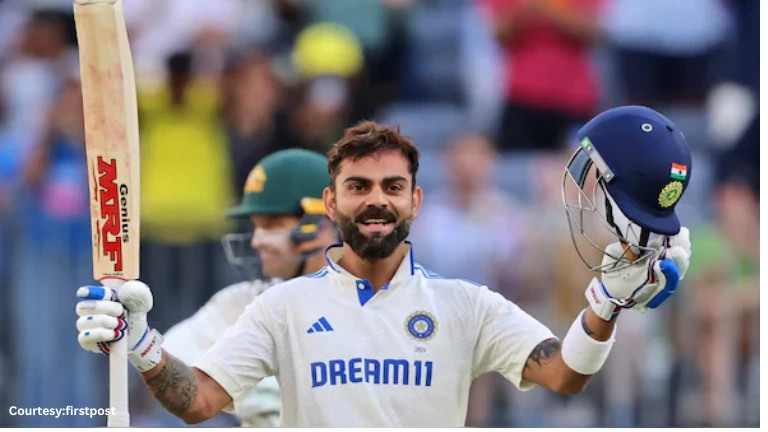Cricket is one of the world’s most popular sports, especially loved in countries like India, England, Australia, and South Africa. But if you’re new to cricket, the rules might feel complicated or confusing at first. Don’t worry this guide will explain cricket rules in a simple way, starting from the basics and moving into some of the more detailed parts of the game.
By the end, you’ll understand key terms like “no ball,” “wide ball,” “LBW,” and even the Decision Review System (DRS). We’ll also cover the latest cricket rules changes in 2025, so you’re up to date with how the game is played today.
Table of Contents
What is Cricket?
At its core, cricket is a bat-and-ball game played between two teams, each with 11 players. The main goal is to score more runs than the other team. The game is played on a large oval field with a rectangular 22-yard-long pitch in the center.
Each team gets a chance to bat and bowl (or field). When a team is batting, they try to score runs. The other team bowls and fields, trying to get the batters “out” and stop runs.
The Cricket Pitch and Key Positions
The pitch is the central strip where most of the action happens. At each end of the pitch, there are three small sticks called “stumps” stuck in the ground with two small sticks called “bails” balanced on top. Together, these are known as the “wicket.”
One batter stands at each end of the pitch. The bowler runs up and bowls the ball towards the batter standing at the other end. The batter tries to hit the ball and score runs by running between the wickets or by hitting the ball to the boundary of the field.
How Do Runs Work?
Runs are the points in cricket. The batters score runs by hitting the ball and running to the opposite end of the pitch. Each time both batters successfully swap ends, one run is scored.
If the ball crosses the boundary after bouncing inside the field, the batting team gets 4 runs automatically. If it crosses the boundary without touching the ground (a six), the batting team gets 6 runs.
How Does the Game End?
In cricket, the team that scores more runs wins. But the way runs are scored and how the game flows depends on the format. There are three main formats:
- Test cricket: Played over 5 days, with each team getting two chances to bat.
- One Day Internationals (ODI): Each team bats for 50 overs.
- T20: Each team bats for 20 overs (an over is 6 balls bowled).
What is an Over?
An over consists of six legal balls bowled by the same bowler. After an over ends, another bowler bowls from the opposite end. This keeps the game balanced and fair.
Latest Cricket Rules Changes in 2025 You Should Know
Cricket keeps evolving. In 2025, some new rules have been introduced to keep the game fast and fair, especially in the T20 format. These include:
- New powerplay rules that limit how many fielders can be outside a certain area early in the innings.
- Stricter penalties for teams that take too long to bowl their overs (slow over rates).
- Some changes in how no balls are called to make the game safer.
What is a No Ball and Wide Ball?
When a bowler bowls the ball, they must follow certain rules:
- The bowler must not step beyond a line called the “crease” when delivering the ball.
- The ball must be bowled fairly, not dangerously or illegally.
If the bowler breaks these rules, it’s called a no ball. This means the batting team gets an extra run and the next ball is a “free hit,” meaning the batter can’t be out except by a run out.
A wide ball is when the ball is bowled too far away from the batter for them to hit it. This also gives the batting team an extra run, and the ball has to be bowled again.
Both no balls and wide balls help make sure bowlers don’t cheat or bowl unfairly.
How Can Batters Get Out?
The bowling team tries to get the batting team’s players out to stop them from scoring runs. Here are some common ways batters can be out:
- Bowled: The ball hits the stumps and knocks off the bails.
- Caught: The batter hits the ball and a fielder catches it before it touches the ground.
- Run out: A fielder hits the stumps with the ball while the batter is running between wickets.
- LBW (Leg Before Wicket): This one is tricky and very important.
What is LBW (Leg Before Wicket)?
LBW is one of the hardest rules to understand but important to know. Imagine the ball is coming straight towards the stumps, but the batter’s leg blocks it instead of the bat. If the ball would have hit the stumps, the umpire can give the batter out LBW.
For an LBW decision, the umpire checks:
- If the ball pitched in line with the wickets.
- If the ball hit the batter’s leg in line with the wickets.
- If the ball would have hit the stumps.
What is the Decision Review System (DRS)?
Sometimes, umpires make wrong calls. To reduce mistakes, the Decision Review System (DRS) was introduced. It uses technology like ball tracking, slow-motion replays, and sound detection to review decisions like LBW or catches.
Each team gets a limited number of reviews per innings. If the review shows the umpire’s decision was wrong, the call is overturned.
Cricket Rules for T20 Format
T20 cricket is fast, fun, and lasts about 3 hours. Each team bowls 20 overs, and batsmen try to score as many runs as possible quickly. Bowlers can bowl a maximum of 4 overs each.
Special rules encourage aggressive batting, like powerplays where only a few fielders are allowed outside a certain boundary, giving batters a better chance to score.
Why Should You Care About Cricket Rules?
Knowing cricket rules makes watching matches much more enjoyable. You’ll understand why the umpire signals a no ball, why the fielders suddenly run to the other side during powerplays, or why teams review a close LBW decision.
Summary
Cricket might seem complicated at first, but it’s easy to learn step-by-step. Here are the key points to remember:
- Cricket is a bat-and-ball game played between two teams trying to score runs.
- The bowler bowls six balls in an over, and the batter tries to score by running or hitting boundaries.
- There are different formats — Test, ODI, and T20 — with different numbers of overs.
- Important rules include no ball, wide ball, and LBW.
- The Decision Review System (DRS) helps correct umpire mistakes.
- 2025 brings new cricket rules to make the game faster and fairer.
If you keep these basics in mind, you’ll enjoy cricket matches much more, whether you watch on TV, at the stadium, or follow online.


